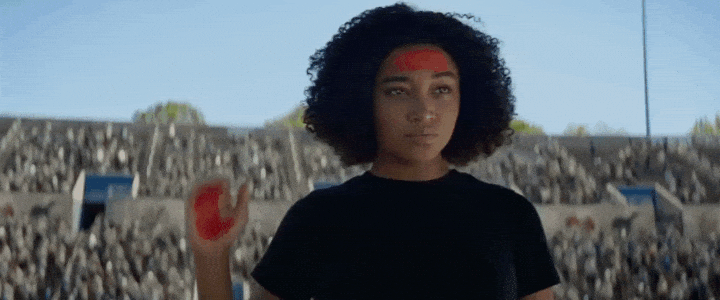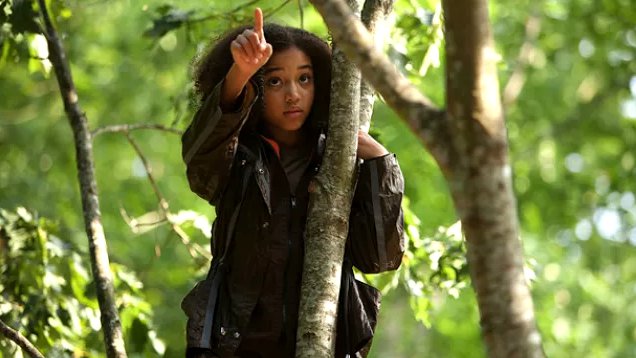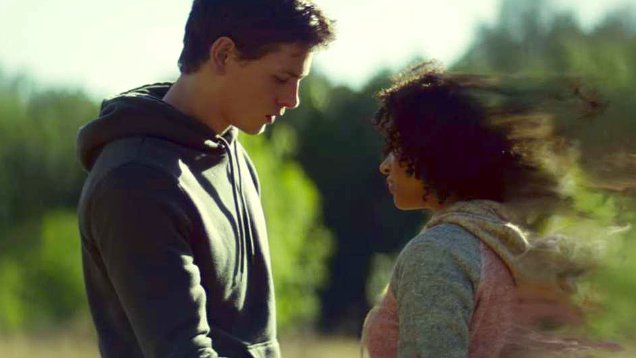The Darkest Minds is the derivative dystopian YA adaptation no-one needed

When The Darkest Minds name-checks Harry Potter, it adopts a specific strategy. Openly comparing itself to JK Rowling’s famous franchise, the film calls out its own flaws – its similarities with other YA adaptations, namely – before someone else can. Or, at least that’s what the latest page-to-screen dystopian effort would like to think.
Alas, by the time the movie’s awkward chat about lantern-lit celebrations and boy wizards takes place, The Darkest Minds’ resemblance to The Hunger Games, The Maze Runner, Divergent and more has long proven apparent. And, from the science-fiction realm, its commonalities with X-Men, Stranger Things and even Star Wars as well.
Throw in hints of Red Dawn and Tomorrow, When the War Began too, and there’s nothing novel about this new franchise-baiting tale, which spins a story about struggling teens navigating a troubling new world order, branded outcasts due to their mutated abilities, and facing off against both cruel adults and each other.
Just as Ruby Daly (Lidya Jewett) reaches her tenth birthday, a mysterious disease hits America, wiping out most of the population under the age of 18. When those remaining start to possess enhanced powers, they’re rounded up in internment camps and colour-coded according to their preternatural skills – reading minds, telekinesis, controlling electricity and just being good at maths, primarily. Ruby finds herself in one such facility, classed in the orange group due to her ability to influence those around her. Within moments, she’s forced to unleash her talents to escape being killed upon arrival.

Unexplained catalyst decimating the existing status quo? Check. An overly neat way of dividing and dehumanising a specific group – and also ramping up the film’s drama? Check again. Adapted from Alexandra Bracken’s novel of the same name, The Darkest Minds isn’t just overtly derivative. It’s happily, dully derivative too, barely trying to hide its patchwork narrative or the debt it owes to its many predecessors.
it’s the type of tick-the-box tween-courting fare that keeps being made
When an ostensibly kindly camp doctor (Mandy Moore) helps a now 16-year-old Ruby (The Hunger Games’ Amanda Stenberg) to flee, she teams up with fellow escapees Liam (Harris Dickinson), Zu (Miya Cech) and Charles (Skylan Brooks) on a quest for both answers and survival, and the expected plot points keep adding up. With a tentative romance blooming amidst the chaos, a relentless bounty hunter (Gwendoline Christie) and a cruel guard (Wade Williams) tracking the central quartet’s every move, and a rumoured safe haven instilling the kids with a sliver of hope, the list of familiar elements only grows.
In short, it’s the type of tick-the-box tween-courting fare that keeps being made – mashing together previously successful components, enlisting an actor from a past hit, slapping it all onto the screen as quickly as possible, aiming to cash in on a trend and hoping to start a series. Unsurprisingly, there are four more books where this tale came from, though based on the current example, they’re hardly clamouring to make the leap to the cinema.
And yet, while The Darkest Minds is blandly competent cookie-cutter fare at best and insultingly generic at worst, it always feels like a missed opportunity – for its stars and its directors, if little else. Stenberg makes a grounded, determined and relatable heroine.

Dickinson, so excellent in the vastly dissimilar indie Beach Rats, brings his quietly commanding presence to a lacklustre role. And filmmaker Jennifer Yuh Nelson (the second and third Kung Fu Panda movies) gives her live-action debut a more patient approach than the YA dystopian genre is typically know for. Their efforts can’t improve the trope-heavy material, the stock-standard allusions to real-world oppression, the predictable believe-in-yourself message or the routine action scenes, however, let alone the narrative’s gaping plot holes.
Indeed, one of the story’s most simplistic inclusions encapsulates The Darkest Minds’ fate perfectly. The use of colour to brand the remaining children isn’t a bureaucratic choice that offers parallels with racial prejudice, or a stylistic excuse to mix things up on the wardrobe department; rather, it stems from the glimmer that shines in each kid’s eye, depending upon their respective ability. That’s quite possibly the most literal way to demonstrate the film’s premise, offering no evidence of thinking beyond the obvious, and placing little faith in the intelligence of the movie’s young target audience – but that’s The Darkest Minds from start to finish.

















